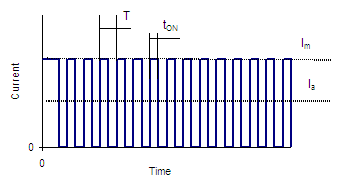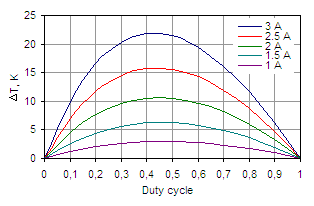Application Tips
Thermoelectric cooler (TEC) is a semiconductor device which is characterized by unique heat pump performance with high efficiency, compactness and durability. The unique ability of TECs to heat and cool, permits them to lower temperature of an object below ambient as well as to stabilize temperature of objects in widely varying ambient conditions.
Here we mention some application tips that can help in optimal use of TECs.
Mounting
Power Supply
Environment
Handling
Heat Dissipation
Reference Data
Brief Summary
DC OR PWM
-

PWM Control
-
Thermoelectric coolers are DC semiconductor devices. All their standard specifications (performance parameters) are given by manufacturers for DC current and voltage.
In many applications customers prefer to use PWM control. It means simple electronics and simple logical control.
At high frequency PWM the averaged current delivered to controlled object is estimated as equivalent of DC current of the same value.
It is true for many applications, but is a great mistake in a case of TECs.
TEC controlled by PWM operates less effectively than at DC current. The PWM control is always less effective than TEC operation at the same average DC current and power consumption.
Simple equations show advantage of DC current TEC controlling in comparison with PWM in achievable delta-T and cooling capacity Q at the same average power consumption:
-

Example of advantage of DC against PWM
(one of standard RMT's single stage TECs) -



where ξ - duty cycle; T - PWM time period; Im - amplitude current of PWM (DC current is ξ x Im ); R - TEC resistance; k - TEC thermal conductivity; N - number of pellets in the TEC.
DC Control of TEC always has advantage over PWM.


